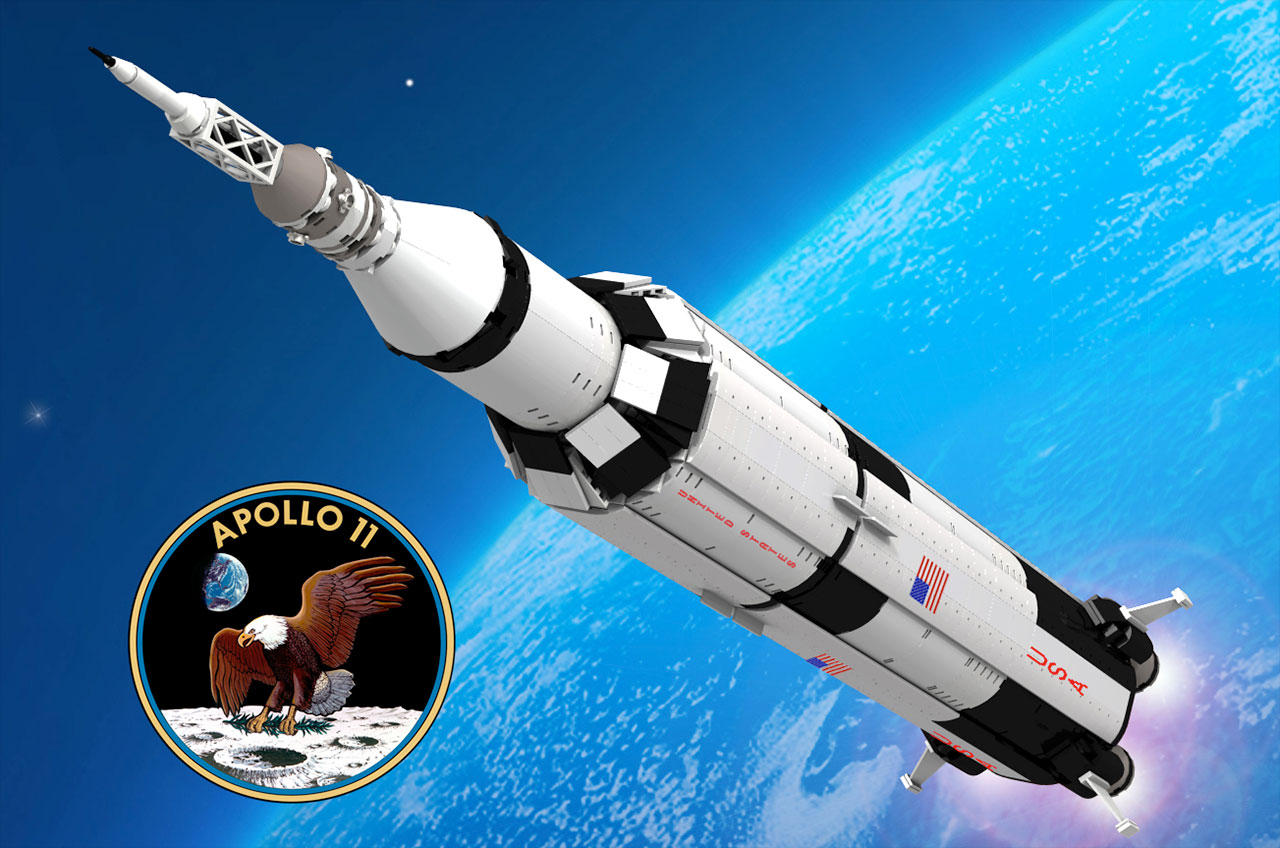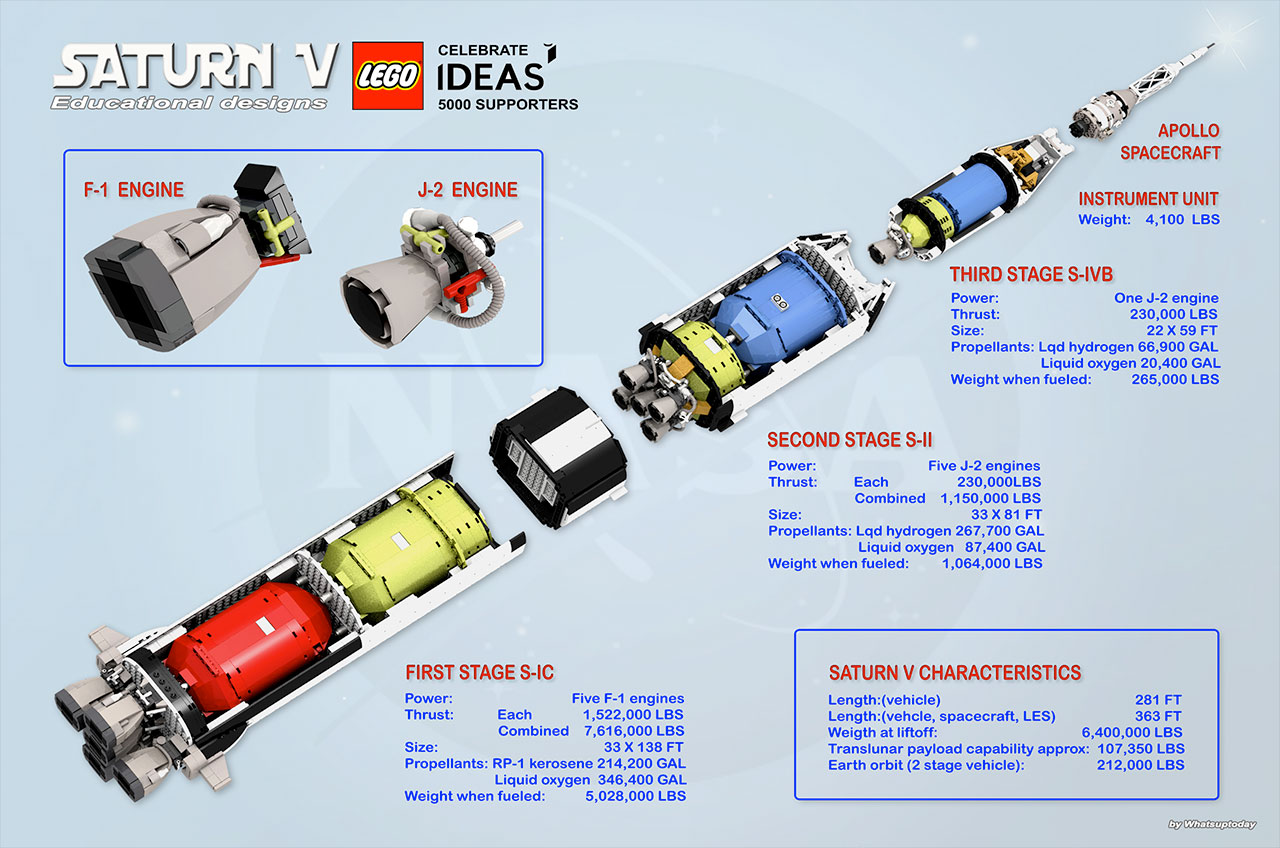Fan-Designed Lego Saturn V Moon Rocket Qualifies for Product Review

A fan-designed scale model of NASA's historic Saturn V rocket has landed on Lego's launch pad and is now waiting an official "go/no-go" call as to whether it will lift off as a commercial set.
The 3-foot-tall (1 m) version of the iconic Apollo 11 booster climbed to its qualifying 10,000th vote on Friday (Nov. 20) on the Lego Ideas website. The rocket, designed by Felix Stiessen and Valerie Roche, will now be considered by the Danish toymaker for possible production when it convenes its next review in January.
"The Eagle has landed!" exclaimed Stiessen, in an update posted on Lego Ideas. "After more than a year our rocket finally completed its mission." [Lego Bricks and Spaceflight: A Photo Gallery]
Stiessen, who built his first Lego Saturn V when he was just seven years old (a creation he described as "a 1 meter high pillar out of colorful bricks"), collaborated with Roche to design the latest version for Lego Ideas, which is made out of more than 2,300 pieces, including its custom stand. The model features stages that can be separated, detailed rocket engines and internal fuel tanks, and both the Apollo command and lunar modules that astronauts used to fly to the moon's surface and return safely to the Earth.
"Although bigger projects seem to have less chances to pass [Lego's] review we are optimistic and hope to be the creators of the first big Lego Ideas set," the pair wrote.
NASA launched 13 Saturn V boosters between 1967 and 1973, including nine that flew crews to the moon and one that deployed the United States' first space station, Skylab. The towering rocket stood 363 feet tall (110 m). It remains today the tallest, heaviest and most powerful rocket ever launched.
Apollo 11's Saturn V, on which Stiessen and Roche based their model, lifted off on July 16, 1969 with astronauts Neil Armstrong, Buzz Aldrin and Michael Collins on board. The two designers first proposed their 1:110 scale Saturn V in commemoration of the 45th anniversary of the mission in 2014, and had recruited a third of the required votes by the next year. [Watch: Lego's New Spaceport Set Is Full of Awesome]
Get the Space.com Newsletter
Breaking space news, the latest updates on rocket launches, skywatching events and more!

To celebrate reaching 10,000 votes, Stiessen and Roche have released the building instructions for a "nano" version of the Saturn V, which stands just 10 inches (26 cm) tall. Designed using just 336 toy bricks (all available today from Lego), the small Saturn also features the rocket's crawler transporter, mobile platform and launch tower, too.
"It's just a thank you to all supporters," explained Stiessen and Roche in an introduction to the instructions. "Take it as an early present and feel free to build your own version!"
The Saturn V is the fifth space exploration-themed project to receive a review on Lego Ideas since the website was founded in 2008. Fan-created models of the Hubble Space Telescope and the International Space Station were turned down, but Lego sold kits based on Daisuke Okubo's toy version of Japan's Hayabusa asteroid sampling probe and Stephen Pakbaz's replica of NASA's Curiosity Mars Rover in 2012 and 2014, respectively.
Presently, there are three other space-themed sets in the top 100 projects on Lego Ideas. A model of the Apollo 11 spacecraft has 2,700 supporters, a miniature of the Lunar Roving Vehicle has more than 1,600 votes, and an Apollo 17 playset created by Roche, Stiessen and Gabriel Russo, who designed the rejected Hubble telescope, has just over 1,420 backers.
Lego previously sold one model of the Saturn V, although it was smaller and less detailed than the one proposed by Stiessen and Roche. In 2003, as part of a series of kits co-branded with the Discovery Channel, Lego released the "Saturn V Moon Mission," a 178-brick set that included the rocket, a lunar lander, Apollo command module and moon rover.
Follow collectSPACE.com on Facebook and on Twitter at @collectSPACE. Copyright 2015 collectSPACE.com. All rights reserved.
Join our Space Forums to keep talking space on the latest missions, night sky and more! And if you have a news tip, correction or comment, let us know at: community@space.com.

Robert Pearlman is a space historian, journalist and the founder and editor of collectSPACE.com, a daily news publication and community devoted to space history with a particular focus on how and where space exploration intersects with pop culture. Pearlman is also a contributing writer for Space.com and co-author of "Space Stations: The Art, Science, and Reality of Working in Space” published by Smithsonian Books in 2018.In 2009, he was inducted into the U.S. Space Camp Hall of Fame in Huntsville, Alabama. In 2021, he was honored by the American Astronautical Society with the Ordway Award for Sustained Excellence in Spaceflight History. In 2023, the National Space Club Florida Committee recognized Pearlman with the Kolcum News and Communications Award for excellence in telling the space story along the Space Coast and throughout the world.
